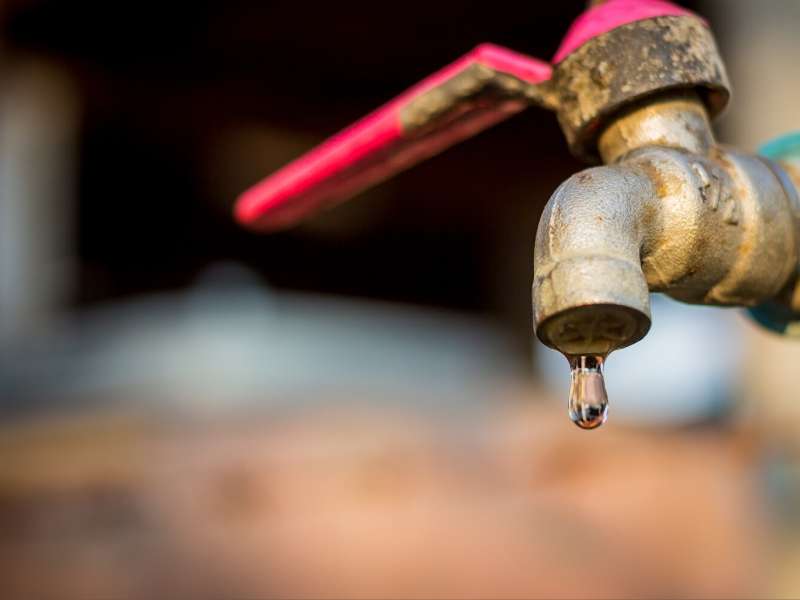Many people enjoy basements in their homes but they are sometimes the point of leakage in a home. In fact, if you’re shopping for a house, it’s one of the critical factors to consider because you’ll pay the price in later years. Also, realize that leaking basement problems are often the source of more damage to your property and may even endanger your family.
Oriole Basement Waterproofing has been spotting severe damages that even trickling water causes to stable structures. The fact is, that water leaks in a leaking basement will leave signs that you must not ignore. Those signs are your signal to survey your leaking basement and make repairs in your home. Here are 10 signs of a leaking basement that you should keep a watchful eye on at all times.
How to Spot a Leaking Basement in Your Home

1 • Ceilings, Walls, and Floors with Efflorescence
Survey your basement and look for white stains that look chalky on the structures. They often show up on concrete when water leaks and dries, forming a mineral deposit over time. Dry air in the basement creates more efflorescence and may appear sparkling in some cases. But, wherever the white tracks are – that’s where you trace the water to its origin.
2 • Mortar Joint Leaks
Mortar has limits and is prone to deterioration, especially during harsh weather conditions. You’re likely to see leaking mortar joints if your basement foundation is made up of bricks, blocks, or stones. However, leaks from mortar joints are straightforward to spot because of the staining and a puddle of water gathering near the damaged area.
3 • Growing Mold and Mildew
Damp walls and floors are breeding grounds for dangerous mold and mildew. Unfortunately, mold can seriously affect the household and the well-being of its members. Interestingly, mold and mildew appear in various colors such as yellow, black, green, and more. When there isn’t enough ventilation, mold spreads like wildfire. “Cold corners” are often the spots where mold and mildew typically grow. Toxins, irritants, and allergens that ensue can cause severe respiratory and other issues. Therefore, mold and mildew must be attended to immediately.
4 • Mustiness in the Air a Sign of a Leaking Basement
However, it’s not always what you can see. What tingles your nose can be a sign of a leaking basement as well. The dank can spread to the rest of the home, clothes, furniture, and more. It may also come from the mold and mildew that’s spreading in areas that have water leaks. The smell is one sign that your basement may have a leakage.
5 • Clogging of Drain Tiles
Drains may be compromised with roots from trees and plants, causing clogs. The blockage will cause the water to back up and create anything from a puddle to floods. If the basement has no waterproofing plan, you can expect a massive amount of pooling and a leaking basement. Check all drains to see if something is blocking the flow of water.
6 • Water Stains
Water stains are sometimes caused by overflowing laundry machines or leaky pipes. The water then seeps into the common areas where the floor and the walls meet. Water stains are the most natural signs you’ll see when you have a leaking basement.
7 • Rusting
Support pillars, electric boxes, nails, nuts, and bolts are all susceptible to rust when there’s a leakage in the basement. Some metal parts of the cellars are irreplaceable, and fuse boxes are in danger of short circuits that may cause a fire. You should do something about the leaking as soon as possible before your property gets devastated.
8 • Honeycomb Surfaces
When concrete walls are not properly done, cavities and pits may develop, resembling a cell-like structure. When water leaks into these pits, a gradual erosion starts. This causes cracks on the walls that weaken the foundation of the home. Both the leaking and the honeycombing must be taken care of to prolong the structure’s longevity, especially if the house is in an area that experiences flooding.
9 • Leaky Tie Rods
Tie rods may leak since water quickly trickles down them. They’ll eventually cause floods or puddles of water – at the least. If these puddles are left alone, there’s a high chance of growing moss around the area, and the floor will become slippery.
10 • Flaking Wall Surfaces
Mineral deposits sometimes can get in between the spackle and the walls chip, or flake away when water leaks down them. This causes severe damages to the walls and weakens the foundation of the entire house. You’ll need to get this repaired and it may cost you a lot of money.
In Conclusion
Water leaks must not be neglected for too long because of the possible damages that they can cause to your home. Whether you’re buying a home or maintaining one, you must always be vigilant and check the basement for signs of leaks. The 10 signs mentioned above will help you to find out if you have a leaking basement for the good of your property but also for the safety of your family.
Thank you for reading and if you have any questions or suggestions, please leave them in the comments below. We’ve also included some other interesting links to all things design.
Images Courtesy of Canva.
5 Home Improvement and Remodeling Ideas to Boost Your Home Value
5 Reasons to Hire a Roofing Contractor
3 Things You Need if You are Planning to Convert Your Attic
Guidelines to a De-stressing & Relaxing Intimate Environment





